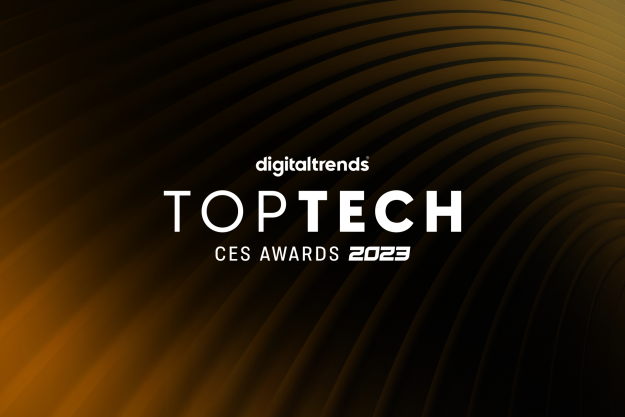When you learn about a new or upcoming type of technology, you’ll often realize it’s not just a single, siloed invention. It will rely on breakthroughs in artificial intelligence, material science, and computing power. And when these technologies build upon each other, they start to accelerate the others, say XPRIZE founder Peter H. Diamandis and entrepreneur Steven Kotler in their new book, The Future Is Faster than you Think: How Converging Technologies Are Transforming Business, Industries, and Our Lives.
The duo believes the changes will be profound, and discuss the ways in which virtual reality, 3D-printing, quantum computing, and other technologies will shape industries, governments, and the environment in the near future. Digital Trends spoke with Diamandis and Kotler about the book and these converging technologies.
Thy drugs are quick
There are some industries that require waiting and watching. Pharmaceutical development is one of those — but Diamandis and Kotler say companies such as Insilico Medicine are using A.I. to speed up the often years-long drug discovery process. For these new treatments to work for the general population, clinical trials are still a necessary and lengthy part of the process. In the future, the effect of new drugs could be more effectively modeled with software before such trials, they say. “The hope is that we can model using A.I. and model using quantum computers,” said Diamandis. Lab-created organoids — tissues derived from stem cells that resemble a patient’s liver, heart, and so on — could also help doctors predict how the body will respond to a drug.

When medicine is ultra-personalized, a clinical trial won’t necessarily help. Last year, Mila Makovec received a tailor-made treatment for Batten disease, which damages brain cells and leads to blindness and death. It took about a year to create the drug and administer the first dose. “Nothing like that’s ever happened,” said Kotler of the speed at which the Food and Drug Administration approved the treatment. “That’s astounding.” Right now, these types of treatments are prohibitively expensive for most people and require an enormous amount of research. Even with fatal diseases, treatments still need to be tested for safety and efficacy before doctors can treat patients with them.
Fantastic flying machines
In the book, Diamandis and Kotler contend that new transportation options will transform where people live and work. With a combination of autonomous vehicles, Hyperloop, and Uber Elevate, by 2028 you’ll be able to commute from Cleveland, Ohio to a meeting in New York City in about an hour. The book has several of these vignettes, but they won’t necessarily be ubiquitous right away. “The ‘you’ who lives in New York, San Francisco, L.A., etc., is going to get those technologies sooner,” said Kotler. “They’re going to they’re going to show up in places where there’s way more early tech adopters.”

One aspect that’s missing from the description of the commute is the inevitable growing pains. Your Uber Elevate might pick you up from the roof of a Cleveland skyscraper, but what’s the wait going to be like in the building’s elevators with this new rush of commuters? What kind of pushback will cities get from residents who don’t want a skyport in their backyard? There are also a lot of logistics to consider with the Federal Aviation Association and the U.S. Department of Transportation. “With flying cars, with Hyperloops, with fast development in places like Idaho, we need a sort of nation-wide environmental planning and resource planning, at a level that we’ve never had before,” said Kotler. “The good news is, for the same reasons that we can apply quantum and A.I. to model the human body, we’re starting to be able to model whole ecosystems, which has never really happened before.”
On the ground, the state of the power grid is another problem, especially as cities and states shift to renewable energy. “The only way to really fix it is not to rebuild it,” said Diamandis. “It’s going to be to make it micro grids, independent grids, where it’s just like the internet.” These exist now, but many run on diesel generators and only kick in when the main grid goes down.

As the population continues to sprawl, it would make sense to do so with a more diversified grid and an eye toward protecting biodiversity. That takes planning and forethought, and it hasn’t happened too often in the U.S. “We know deforestation is a massive, massive, massive problem,” said Kotler, as is soil erosion. “If we’ve got technologies that can solve massive environmental challenges, that certainly seems like a job for governments,” he said.
Addicted to tech
It often seems like technology creates as many problems as it’s poised to solve — like e-waste. Diamandis admits the tradeoff for a personal A.I. that knows your preferences, schedule, and even emotions is a complete depletion of privacy. “I think people are going to end up opting to give their A.I. assistants a lot more access to their daily lives, minute by minute,” he said. That includes access to emails, conversations, and facial expressions that will let your virtual assistant know you’re feeling sad. That way, it will be able to play a cheerful tune when you walk through the door. “I believe that younger people have less of an expectation or a demand for privacy,” said Diamandis. Instead, he believes they favor convenience.
Kotler is a little more hesitant about this all-knowing A.I. He already says smartphones are addictive devices. “I think we’ve sacrificed a generation to our technology, in a sense,” he said. While he thinks we’ve realized it and are trying to fix the problem, it won’t be an instantaneous shift. “With advertising, we talked about in the book, it’s going to get worse, probably, before it gets better,” he said, “but we do think it’s going to get better.” For a lot of these technologies, for early and late adopters alike, it’s probably going to get worse before it gets better.


